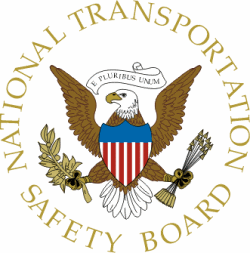Piper PA-32 Destroyed By Impact, Two Fatally Injured
The NTSB has released a preliminary report from an accident that occurred April 11 near Cedar Grove, WV. Two people were fatally injured when the Piper PA-32RT-300T went down on a flight from Akron, OH to Spartanburg, SC.

According to the report, at approximately 1653 eastern daylight time, the aircraft (N39965) was destroyed when it impacted trees and terrain near Cedar Grove, WV. The commercial pilot and one passenger were fatally injured. Visual meteorological conditions prevailed, however an instrument flight rules flight plan was filed for the flight. The couple had departed Akron Fulton International Airport (KAKR), Akron, OH, about 1513, and was destined for Spartanburg Downtown Memorial Airport (KSPA), Spartanburg, SC. The personal flight was conducted under the provisions of Title 14 Code of Federal Regulations Part 91.
Preliminary air traffic control information provided by the Federal Aviation Administration indicated that after departure, the pilot climbed the airplane to an altitude of 12,000 feet on a direct course to SPA, and established radio communications with air traffic control (ATC). About 1612, the pilot requested and was cleared to make a 30-degree left turn to maneuver around an area of precipitation. About 1625, the pilot initiated a left turn to the north and began to descend, and when queried by ATC, stated that he was deviating around weather. The airplane subsequently turned right, made a 270-degree turn, and began tracking south, then southwest, before radio contact was lost with the pilot. Subsequently the flight was lost from radar contact and at 1653 emergency operators received calls concerning the accident.
Two witnesses near the accident site observed the airplane as it overflew their home. They described the sound of the engine as "loud," but stated that it was fading in and out. They both stated that the airplane was in a nose-down, right bank attitude as it descended into trees. They subsequently heard the sound of impact, but did not see any smoke or fire in the vicinity of the crash site. The witnesses reported that the weather was overcast, and that about 10 minutes after the accident, it began raining.
The wreckage was located on a densely-wooded hillside at an elevation of about 1,400 feet. The initial impact point was identified by broken tree branches and the right wingtip fairing. The wreckage path continued from the initial impact point on an approximate 360-degree heading, and measured about 300 feet in length. Several three-inch diameter tree branches displaying 45-degree cuts were identified along the wreckage path, and pieces associated with both wings, the vertical stabilizer and rudder, and left and right horizontal stabilizers were located. Terrain at the accident site and disposition of the wreckage precluded thorough examination. The wreckage was recovered to a secure storage facility, and examination of the airframe and engine was scheduled for a later date.
 NTSB Final Report: Cessna 177B
NTSB Final Report: Cessna 177B ANN's Daily Aero-Term (05.08.25): Final Approach Fix
ANN's Daily Aero-Term (05.08.25): Final Approach Fix Aero-News: Quote of the Day (05.08.25)
Aero-News: Quote of the Day (05.08.25) ANN's Daily Aero-Term (05.09.25): Estimated (EST)
ANN's Daily Aero-Term (05.09.25): Estimated (EST) ANN's Daily Aero-Linx (05.09.25)
ANN's Daily Aero-Linx (05.09.25)



